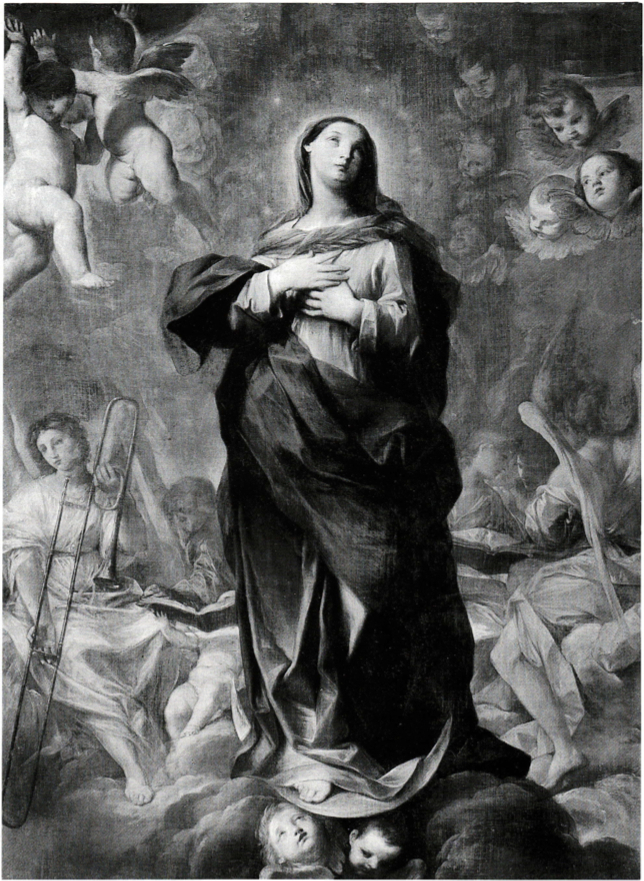Found a really striking painting today by Felice Torelli and posted it in the 18th Century Trombone History Timeline. I have not seen this painting in any of the standard trombone or brass sources. As I note in an earlier post, the 18th century is a little late for depictions of trombonists as angels, but here’s another example. I’m still researching the artist; one source says Felice Torelli is actually the brother of composer Giuseppe Torelli, which would be an interesting bit of information, but Felice’s years (1667-1748) don’t seem quite right. At any rate, the painting definitely shows the trombone prominently, with no other instruments obviously included in the image. As far as the actual rendering, one never knows how literal artists are; as I mention in the caption, the flat stays are to be expected, but the slide appears somewhat long and the grip somewhat unorthodox. The mouthpiece, which at first glance appears to be missing, may be suggested by a small horizontal line approximately where the player’s Adam’s apple would be; a color reproduction would likely clarify.
Update: I found out that Felice Torelli is, in fact, the brother of composer/violinist Giuseppe Torelli. In fact, according to Oxford Art Online, Felice actually pursued music for a time, moving to Bologna with his older brother, Giuseppe (source: Oxford Art Online, “Torelli: (1) Felice Torelli”).
 1710—Verona, Italy: Felice Torelli depicts an angel playing trombone in Immacolata Concezione, painted for the church of Sant’Orsola dei Mendicati shortly after the proclamation of the feast day of the Immaculate Conception. The image is noteworthy because no other musical instruments are depicted with the trombone. The artist includes the usual flat stays found on trombones of the time, but the slide appears to be somewhat longer than usual and the player’s grip on the instrument’s back tubing somewhat unorthodox (above; public domain image; Verona, Museo di Castelvecchio) (Chiodini).
1710—Verona, Italy: Felice Torelli depicts an angel playing trombone in Immacolata Concezione, painted for the church of Sant’Orsola dei Mendicati shortly after the proclamation of the feast day of the Immaculate Conception. The image is noteworthy because no other musical instruments are depicted with the trombone. The artist includes the usual flat stays found on trombones of the time, but the slide appears to be somewhat longer than usual and the player’s grip on the instrument’s back tubing somewhat unorthodox (above; public domain image; Verona, Museo di Castelvecchio) (Chiodini).